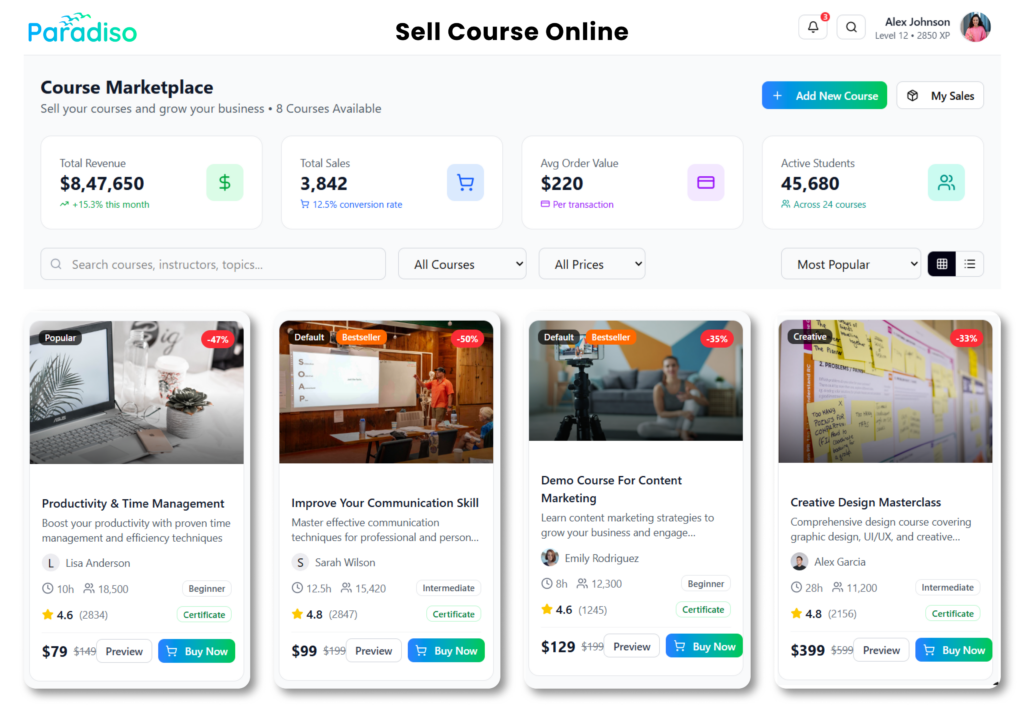Pricing is a crucial consideration for schools and businesses when selecting a learning management system (LMS). Balancing the need to educate students and train employees with budget constraints is paramount. However, comparing prices among LMS solutions can take time due to varying payment plans offered by different vendors.
Some vendors readily provide LMS pricing information on their websites, while others require direct contact for a customized quote. To simplify the process, we have developed a comprehensive pricing guide that covers popular LMS vendors and their pricing models.
Our guide offers valuable insights into common payment structures and aims to assist you in making an informed decision. This resource lets you understand LMS pricing options and select the solution that best aligns with your organization’s budget and requirements.
What Is an LMS?
A learning management system (LMS) is a platform that helps deliver and track educational and training content. It’s used by companies to onboard and train employees and by educational organizations to teach students. E-learning tools within an LMS offer customizable content, mobile-friendly lessons, and engaging elements like gamification. An LMS can enhance employee engagement and retention rates, benefiting organizations and learners.
Here Are Some Essential LMS Features that Serve as Your Indispensable Assistant:
Manage Users
Organize Content
Track Progress
Automate Training
Blended Learning
Tailored LMS Pricing Models to Accommodate Unique Business Needs
Various industries, like businesses, schools, and hospitals, use LMS systems. The LMS pricing models for LMS solutions are flexible to meet different needs. Most LMS systems have subscription-based pricing called software-as-a-service (SaaS), where you pay for the needed features. Some vendors offer annual or one-time license fees, while others offer free versions.
1. Pay per learner
2. Pay per active users
3. Pay as you go
4. License Fee/Subscription
5. Open source LMS
Open-source LMS have freely accessible source code but do not have a specific pricing model. However, customization, integrations, and maintenance can be required, which may involve expenses. Working with open-source LMSs requires technical skills or hiring someone with programming knowledge. Remember, while the code is free, other services may have associated costs.
How to Choose the LMS Pricing Model that Best Fits Your Organization's Needs
Step 1: Calculate the Number of Users You Intend to Train
Before choosing an LMS, determine the number of learners using it within a billing cycle, like a month. Consider whether this number will remain consistent throughout the year or might vary. This assessment will help you select an LMS plan that suits your learner’s needs and budget effectively.
Step 2: Estimate the Duration of LMS Usage for Each User
Step 3: Predict the Number of Courses You Plan to Upload
Step 4: Identify Key Features and Integrations Required
A Comprehensive Analysis of Top Platforms' Pricing List
1. Paradiso LMS
Paradiso LMS is an exceptional learning management system that empowers businesses to train and develop their employees effectively. It offers various features to enhance the learning experience, such as social learning, gamification elements, and robust analytics.
Whether you run a small or large organization, it has flexible pricing plans tailored to meet your specific needs. One of its key strengths is providing a secure and centralized space to store all your course materials, including videos, PDFs, Word documents, and PowerPoint presentations.
With Paradiso LMS, you can easily manage training deadlines, send invitations and reminders, and gain valuable insights through detailed reports on your team’s learning progress. Additionally, the system automatically generates completion certificates for trainees who complete online exams, interactive training scenarios, and self-assessments.
It combines comprehensive training management tools, an intuitive user interface, and reasonable pricing, making it an exceptional choice for organizations looking to optimize their training and development initiatives.
2. LearnDash
3. Absorb
4. Talent LMS
5. LearnUpon
6. Mindflash
Conclusion
The success of your digital learning project depends on finding the right balance between price and value. In this article, we’ve discussed popular LMS pricing models, but remember that offers can vary greatly even within the same model.
Transparency is crucial when choosing a pricing model for the future. If you’re still confused about which LMS to select, we recommend you try Paradiso LMS. It caters to small- and medium-sized businesses but can also scale for larger companies.
Its flexible and intuitive features allow you to customize your learning programs to suit your preferences. Get started by signing up for the free Paradiso LMS.














